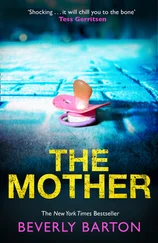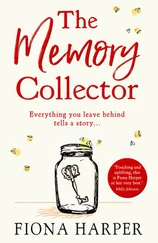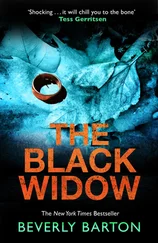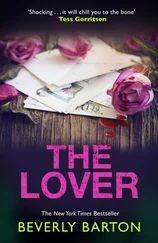“Who was the baby girl with a name beginning with B, Glen?”
“It was a private fantasy between two consenting adults.”
“Was it Bella?”
“It was a private fantasy—”
“What have you done with Bella?”
“It was a private fantasy . . .”
When they charged him, he stopped mumbling about his private fantasy and looked the detective in the eye.
“You’re making a terrible mistake, Mr. Sparkes.”
It was the last thing he said before he was locked up to await trial.
A winter on remand did not persuade him to cooperate, and on February 11, 2008, Glen Taylor stood in the Old Bailey to deliver his plea of not guilty to abduction in a loud and steady voice. He sat down, barely acknowledging the prison officers on either side as he fixed his gaze on the detective inspector making his way to the witness box.
Sparkes felt the power of Taylor’s stare boring into the back of his head and tried to collect himself before he took the oath. There was the slightest of tremors in his voice as he spoke the words on the card, but he went on to give his evidence in chief competently, keeping his answers short, clear, and humble.
The months of footslogging, chasing, heavy lifting, checking, questioning, and stacking up the evidence were condensed into a short performance before a small and select audience and a battery of critics.
Chief among them was Glen Taylor’s defense barrister, a patrician warhorse in ancient, fraying wig and gown, who stood up to cross-examine him.
The jury of eight men and four women, winnowed by the defense to ensure male sensibilities and sympathies were in the majority, turned their heads like a patch of sunflowers to focus on him.
The barrister, Charles Sanderson QC, stood with one hand in his pocket, his notes in the other. He exuded confidence as he began his attempt to undermine some of the nuggets of evidence and plant doubt in the jury’s collective consciousness.
“When did the witness Mr. Spencer make a note about the blue van? Was it before he fabricated the long-haired man sighting?”
“Mr. Spencer was mistaken about the sighting. He has admitted that,” Sparkes said, keeping his voice level.
“Yes, I see.”
“His evidence will be that he wrote down that he saw what he thought was Peter Tredwell’s blue van when he made his notes on the afternoon of October the second.”
“And he is sure he didn’t fabricate—sorry, make a mistake—about seeing a blue van?”
“Yes, he is sure. He will tell you himself when he gives evidence.”
“I see . . .”
“Now, how far away was the witness when he saw the blue panel van . . . ?”
“And does Mr. Spencer wear glasses . . . ?”
“I see . . .”
“And how many blue panel vans are there on the road in the UK, Inspector . . . ?”
“I see . . .”
It was the “I sees” that did the damage, “I see” meaning “Oh dear, another point to us.”
Chip, chip, chip. Sparkes parried the blows patiently. He’d faced a number of Sandersons over the years—“Old Boy” show-offs—and knew this sort of grandstanding didn’t always play well with a jury.
They reached the sweet-paper discovery, and Sanderson took the expected line about the chances of contamination of evidence.
“Detective Inspector, how long was the sweet paper in Jean Taylor’s coat pocket?”
Sparkes kept his voice steady, making sure he looked across at the jurors to emphasize the point. “Eight months, we believe. She said in her statement that she found it in the van on December the seventeenth. It was the only time she was allowed to go on a delivery with her husband, so she remembers it well.”
“Eight months? That’s a long time to gather other fluff and hair, isn’t it?”
“Hair from a gray Burmese cross, like the Elliott family cat? We will bring expert testimony to say that is statistically extremely unlikely. And the likelihood of a coincidence drops still further when that cat hair evidence is found on a Skittles packet. Both a Burmese cross cat and a Skittle were present at the scene when Bella Elliott was abducted.”
Sparkes saw that the jurors were writing notes and Sanderson moved swiftly on.
Sparkes took a gulp of water from the glass at his elbow. He knew his adversary was building up to his big moment: the Goldilocks conversations.
Sparkes had prepared with the lawyers to make sure he was ready. He knew every nuance of the Regulation of Investigatory Powers Act 2000, every step of the authorization procedure, the careful preparation of the CHIS and the preservation and chain of evidence.
The team had spent a significant amount of time prepping him to emphasize Taylor’s use of chat rooms and his porn habit.
“The jury won’t be interested in subclause 101 or who gave permission for what—we need to tell them about the risk of Taylor feeding his appetite for baby girls,” the CPS team leader had urged, and Sparkes knew he was right.
He felt ready when the barrister marched into the minefield of pornography addiction, challenging the police action every step of the way. Sanderson’s goal was to force him to concede that Taylor could have inadvertently downloaded some of the “more extreme” images found on his computer.
“The images of children being sexually abused?” Sparkes had answered. “We believe he deliberately downloaded them—that he couldn’t have done it accidentally—and experts will testify on that matter.”
“We also have experts who will say that it could have been accidental, Inspector.”
Sparkes knew the defense was helped by the fact that Taylor looked nothing like the perverts who normally appeared in court. The prosecution team told him that Sanderson had shown a photo of his client to the juniors and solicitors in his chambers and the words most often used to describe him in his impromptu focus groups were “clean cut.”
With the images filed away, Sanderson challenged the detective head-on about Bella Elliott’s disappearance.
“Detective Inspector Sparkes, isn’t it right that Bella Elliott has never been found?”
“Yes, that is correct.”
“And that your team has failed to find any leads to her whereabouts?”
“No, that isn’t right. Our investigation led us to the accused.”
“Your case is based on suspicions, supposition, and circumstantial evidence, not facts, Inspector, isn’t it?”
“We’ve clear evidence to link the accused to the disappearance of Bella Elliott.”
“Ah, the evidence. Forensic guesswork and unreliable witnesses. All a bit flimsy because, I suggest, you were always after the wrong man. You were so desperate, you resorted to leading my client into a fictitious and mendacious relationship.”
The jurors didn’t look like they knew what a fictitious and mendacious relationship was, but they looked interested in the spectacle. Four stars and “compelling performances” was how the Telegraph might review it the next day, Sparkes thought as he finally stepped down from the witness box at lunchtime and returned to his seat in the audience.
But the star turn came that afternoon. Dulled by an institutional lunch, the jurors filed back in and slumped in their seats. They did not stay there long.
The mother entered the witness box, dressed in simple black with a red “Find Bella” badge blooming on her breast.
Sparkes smiled encouragingly at her, but he was unhappy she’d chosen to wear the badge and concerned about the questions it would raise.
The prosecutor, a reed of a woman alongside the bulk of her opponent, led Dawn Elliott through her evidence in chief, letting the young woman tell her story simply and effectively.
When Dawn broke down as she described the moment when she realized her child had gone, the jurors were transfixed and some seemed close to tears themselves. The judge asked her if she’d like a glass of water, and the usher obliged as the barristers rustled their papers, ready to resume.
Читать дальше












